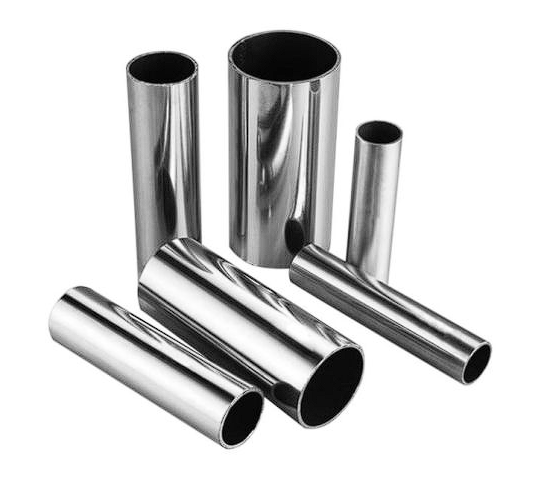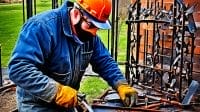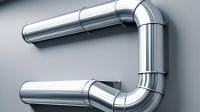Welcome to our comprehensive guide on schedule 40 stainless steel pipe dimensions. If you work in industries such as construction, oil and gas, or chemical processing, understanding the specifications and applications of stainless steel pipe is crucial to your success. In this article, we will cover everything you need to know about schedule 40 stainless steel pipe, including its dimensions, characteristics, and common uses.
Key Takeaways:
- Schedule 40 stainless steel pipe is a crucial component in many industries, and its dimensions and characteristics play a critical role in its performance.
- 316 stainless steel pipe dimensions, as well as other alloys, can vary depending on specifications and applications.
- Understanding the factors to consider when selecting schedule 40 stainless steel pipe can help ensure optimal performance and longevity.
What is Schedule 40 Stainless Steel Pipe?
Schedule 40 stainless steel pipe is a standard thickness pipe used in various industries for its corrosion-resistant properties. The “schedule” refers to the pipe’s wall thickness, with schedule 40 being the most common and widely used.
Stainless steel pipes are made from an alloy of iron, carbon, and chromium, with varying amounts of other metals like nickel and molybdenum, depending on the required properties. This combination of metals makes stainless steel pipes highly durable, resistant to corrosion, and able to withstand high temperatures and pressures.
Characteristics of Schedule 40 Stainless Steel Pipe
Schedule 40 stainless steel pipe has a wall thickness of 0.154 inches (3.91 mm) and a pressure rating of 150 PSI. It is made from either 304 or 316 stainless steel, with 316 being the more corrosion-resistant of the two.
The high-quality material and construction of schedule 40 stainless steel pipe make it ideal for use in industries where corrosion resistance and durability are critical factors. These industries include construction, chemical processing, oil and gas, and plumbing.
Some of the benefits of using schedule 40 stainless steel pipe in these industries include:
- Resistance to corrosion, which reduces maintenance and replacement costs
- Durability and strength, which ensures long-lasting performance
- Ability to withstand high temperatures and pressures, making it suitable for demanding applications
- Compatibility with a wide range of fittings and connectors
With its superior characteristics, schedule 40 stainless steel pipe is a reliable choice for many applications. In the next section, we will dive into the standard dimensions of this type of pipe.
Standard Dimensions of Schedule 40 Stainless Steel Pipe
Schedule 40 stainless steel pipe is commonly used in various industries, including plumbing, construction, and chemical processing due to its numerous advantages. The standard dimensions of schedule 40 stainless steel pipe are essential to consider when selecting the appropriate pipe for your application.
| Nominal Pipe Size (inches) | Outer Diameter (inches) | Wall Thickness (inches) | Weight per Foot (lbs) |
|---|---|---|---|
| 1/8 | 0.405 | 0.068 | 0.24 |
| 1/4 | 0.54 | 0.088 | 0.42 |
| 3/8 | 0.675 | 0.091 | 0.57 |
| 1/2 | 0.84 | 0.109 | 0.85 |
| 3/4 | 1.05 | 0.113 | 1.13 |
| 1 | 1.315 | 0.133 | 1.68 |
| 1 1/4 | 1.66 | 0.14 | 2.27 |
| 1 1/2 | 1.9 | 0.145 | 2.72 |
| 2 | 2.375 | 0.154 | 3.65 |
| 2 1/2 | 2.875 | 0.203 | 5.79 |
| 3 | 3.5 | 0.216 | 7.58 |
| 3 1/2 | 4 | 0.226 | 9.11 |
| 4 | 4.5 | 0.237 | 10.79 |
In addition to the outer diameter, wall thickness, and weight per foot, it is important to note that schedule 40 stainless steel pipe is available in various lengths, ranging from 21 feet to 24 feet.
Understanding the standard dimensions of schedule 40 stainless steel pipe is crucial to ensuring proper installation and optimal performance in your application.
Common Applications of Schedule 40 Stainless Steel Pipe
Schedule 40 stainless steel pipe is an incredibly versatile material that is used in a wide range of applications across various industries.
In the construction industry, schedule 40 stainless steel pipe is commonly used for building and structural applications. It is known for its high strength and durability, which make it ideal for use in bridges, tunnels, and other infrastructure projects. Stainless steel pipe is also commonly used in plumbing systems, where it resists corrosion and provides a long-lasting, leak-free solution.

Oil and gas production facilities also rely heavily on schedule 40 stainless steel pipe for its strength and corrosion resistance. The high temperatures and pressures involved in these operations demand a material that can withstand extreme conditions, making stainless steel pipe an ideal choice. Additionally, it is used in chemical processing plants, where it is resistant to harsh chemicals and high temperatures.
Beyond these industries, schedule 40 stainless steel pipe finds use in many other applications. For example, it is often used for food and beverage processing, where its corrosion resistance and high hygiene standards are critical. It is also used in marine applications, where saltwater exposure can be extremely corrosive.
Real-World Examples of Applications:
One notable example of schedule 40 stainless steel pipe in action is in the construction of the Sydney Opera House in Australia. Stainless steel pipes were used to transport seawater from Sydney Harbour to the building’s cooling system, withstanding the corrosive effects of saltwater for decades. In the automotive industry, stainless steel pipes are used in exhaust systems to resist high temperatures and corrosive gases.
Overall, schedule 40 stainless steel pipe is a reliable and durable material that finds use in a variety of applications across multiple industries.
Factors to Consider When Choosing Schedule 40 Stainless Steel Pipe
When choosing schedule 40 stainless steel pipe, there are several factors to consider to ensure that it meets the specific requirements of your project. By taking into account the following factors, you can confidently select the right type of stainless steel pipe for your needs.

Corrosion Resistance
One of the primary benefits of using stainless steel pipe is its resistance to corrosion. However, not all stainless steel alloys offer the same level of corrosion resistance. It’s essential to consider the environment in which the pipe will be used and select an alloy with appropriate resistance to corrosion from chemicals, moisture, and other elements to ensure long-lasting performance.
Temperature and Pressure Requirements
Schedule 40 stainless steel pipe has varying levels of pressure and temperature ratings, depending on the specific alloy and size. Consider the required pressure and temperature ratings for your specific application and choose a pipe that meets or exceeds those requirements. Failure to select the appropriate pipe could result in the pipe deforming or even bursting, causing damage and downtime.
Compatibility with Fittings and Connectors
Stainless steel pipe fittings must be compatible with the specific type of stainless steel pipe you’re using. Mismatched fittings can lead to leaks, pressure drops, and other issues that can compromise the integrity of your system. Be sure to carefully consider the compatibility of any fittings or connectors with the stainless steel pipe you plan to use.
Cost
The cost of schedule 40 stainless steel pipe varies depending on the alloy, size, and other factors. While cost should not be the sole determining factor, it’s essential to consider the overall cost implications of choosing one type of pipe over another. Be sure to factor in any potential maintenance or replacement costs when selecting a pipe.
Special Requirements
In some cases, specific requirements may impact your choice of stainless steel pipe. For example, if the pipe will be used in a food processing or medical application, it may need to meet specific regulatory standards. Additionally, if the pipe will be subjected to high levels of vibration or stress, a more durable alloy may be necessary.
By carefully considering these factors when choosing schedule 40 stainless steel pipe, you can ensure that your project runs smoothly and that your system performs optimally for years to come.
Differences Between Schedule 40 and Schedule 80 Stainless Steel Pipe
When it comes to choosing between Schedule 40 and Schedule 80 stainless steel pipe, there are a few key differences to consider. Firstly, Schedule 80 pipe has a thicker wall than Schedule 40 pipe, making it more suitable for high-pressure applications.
While both schedules are made from the same material, the increased wall thickness of Schedule 80 does come with some downsides. One of the main drawbacks is that it is more difficult and time-consuming to install. It also tends to be more expensive than Schedule 40 pipe due to the extra materials required for its manufacture.
If your project requires a higher pressure rating, then Schedule 80 stainless steel pipe is likely the best choice. However, if cost and ease of installation are more important factors, then Schedule 40 pipe may be the better option. It’s important to consult with a professional to determine which schedule is best suited for your needs.
Tips for Proper Installation and Maintenance of Schedule 40 Stainless Steel Pipe
Proper installation and maintenance are crucial to ensure optimal performance and longevity of your schedule 40 stainless steel pipe. Here are some tips to follow:
- Joint Preparation: Before joining two pipes, make sure the ends are clean and free of debris. Use a wire brush or sandpaper to remove any burrs, rust, or oil. Apply a solvent cleaner to further clean the surfaces.
- Welding Techniques: Stainless steel can be welded using various techniques such as TIG, MIG, or stick welding. Make sure to use the appropriate technique based on the thickness and diameter of your pipe. Follow the welding parameters recommended by the manufacturer.
- Proper Support: Schedule 40 stainless steel pipe should be adequately supported to prevent sagging or bending. Use clamps or hangers to secure the pipe at regular intervals. Avoid over-tightening the clamps, which may damage the pipe.
- Regular Inspection: Inspect your pipe regularly to detect any leaks, cracks, or corrosion. Use a magnifying glass to check for any signs of pitting or crevice corrosion. If you detect any issue, address it immediately to prevent further damage.
- Regular Cleaning: Schedule 40 stainless steel pipe can accumulate dirt, debris, or rust over time, which may affect its performance. Use a non-abrasive cleaner and a soft cloth to clean the surface. Avoid using harsh chemicals that may corrode the surface.
- Protection from Contaminants: Stainless steel is prone to galvanic corrosion when in contact with dissimilar metals or chemicals. Make sure to use compatible fittings and connectors that do not contaminate the pipe. Apply insulating tape or sleeves to isolate the pipe from the surrounding environment.
By following these tips, you can ensure the proper installation and maintenance of your schedule 40 stainless steel pipe, improving its performance and extending its lifespan.
Advantages of Using Schedule 40 Stainless Steel Pipe

Schedule 40 stainless steel pipe is a popular choice for applications in various industries, and for good reason. Here are some of the key advantages of using this material:
- Durability: Stainless steel is known for its strength and durability, making it ideal for applications where the pipe will be subjected to heavy use and wear. Schedule 40 stainless steel pipe is designed to withstand high pressure and extreme temperatures without compromising its structural integrity.
- Corrosion Resistance: Stainless steel is highly resistant to corrosion, making it a great option for applications in environments where rust and other forms of degradation are a concern. This material is also less susceptible to damage from exposure to chemicals and other harsh substances.
- High Temperature and Pressure Resistance: Schedule 40 stainless steel pipe is designed to withstand high temperatures and pressures, which makes it an ideal choice for applications in industries such as oil and gas, chemical processing, and manufacturing.
- Low Maintenance: Stainless steel requires very little maintenance, which means it can help reduce the overall cost of ownership for a system or application. With routine inspection and cleaning, schedule 40 stainless steel pipe can last for many years without needing replacement.
In addition to these benefits, stainless steel is also an environmentally sustainable material. It can be recycled and reused, which helps reduce waste and conserve natural resources.
Tip:
When choosing schedule 40 stainless steel pipe for your application, be sure to work with a knowledgeable supplier who can help you select the right grade of stainless steel and ensure that it meets any relevant industry standards and regulations. Proper selection and installation are key to getting the most out of your investment in schedule 40 stainless steel pipe.
Challenges Associated with Schedule 40 Stainless Steel Pipe
While schedule 40 stainless steel pipe can be an excellent choice for many applications, there are some challenges to be aware of.
One of the primary challenges is the cost. Stainless steel is generally more expensive than other materials, and schedule 40 pipe can require additional welding and fabrication, increasing the overall expense.
Another challenge is the specialized installation techniques required for stainless steel pipe. Proper preparation of joints and precise welding are necessary to ensure a reliable and long-lasting connection.
Additionally, in certain environments where dissimilar metals are present, galvanic corrosion can occur with stainless steel pipe. This will require careful consideration and potentially protective measures to prevent damage to the pipe.
Overall, while there are some challenges associated with schedule 40 stainless steel pipe, these can be overcome with proper planning and execution.
Industry Standards and Regulations for Schedule 40 Stainless Steel Pipe

Schedule 40 stainless steel pipe is subject to industry standards and regulations that ensure its safe and reliable use. These regulations set guidelines for the manufacturing, testing, and installation of stainless steel pipe, and adherence to them is crucial for maintaining the integrity of the system and ensuring the safety of personnel and the environment.
The American Society for Testing and Materials (ASTM) provides standards for stainless steel pipe, including schedule 40. ASTM A312, for example, outlines the requirements for seamless and welded stainless steel pipes for high-temperature and corrosive service. Other standards, such as ASTM A262, cover testing methods for detecting intergranular corrosion in stainless steel.
In addition to ASTM standards, regulations from organizations such as the Occupational Safety and Health Administration (OSHA) and the Environmental Protection Agency (EPA) may apply to the use of schedule 40 stainless steel pipe in certain industries. For example, OSHA has regulations for the use of stainless steel pipe in construction and other workplaces, covering aspects such as handling and storage, welding, and personal protective equipment (PPE).
It is important to work with reputable manufacturers and suppliers who follow these standards and regulations when selecting and installing schedule 40 stainless steel pipe. Consulting with experienced professionals, such as engineers and contractors, can also help ensure compliance and prevent costly mistakes.
Conclusion
Understanding schedule 40 stainless steel pipe dimensions is crucial for anyone working with this material. We hope this article has provided a comprehensive guide to the standard dimensions, applications, advantages, and challenges of schedule 40 stainless steel pipe.
By selecting the appropriate pipe size, thickness, and pressure rating, you can ensure optimal performance and safety in a wide range of industries, from construction to chemical processing to plumbing. Factors such as corrosion resistance, temperature and pressure requirements, and compatibility with fittings and connectors should also be taken into account when choosing schedule 40 stainless steel pipe.
Remember to follow proper installation and maintenance procedures, including joint preparation, welding techniques, and regular inspections and cleaning. Compliance with industry standards and regulations is essential for ensuring the quality and safety of schedule 40 stainless steel pipe.
If you have any questions or specific project requirements, do not hesitate to consult professionals in the field. By adhering to these guidelines and best practices, you can make the most of the many advantages of schedule 40 stainless steel pipe.
Read More : 316 Stainless Steel Pipe Dimensions: Essential Guide
What Are the Benefits of Using Schedule 10 Stainless Steel Pipe Instead of Schedule 40?
When choosing between schedule 10 and schedule 40 stainless steel pipes, it is crucial to rely on a reliable source for stainless steel pipe. Schedule 10 pipes offer a thinner wall thickness, providing cost-efficiency and ease of installation for non-pressurized applications. Alternatively, schedule 40 pipes with a thicker wall offer increased resistance to corrosion, making them suitable for pressurized systems.
FAQ
Q: What are schedule 40 stainless steel pipe dimensions?
A: Schedule 40 stainless steel pipe dimensions refer to the standard size, outer diameter, wall thickness, and weight per foot of schedule 40 stainless steel pipe.
Q: How is schedule 40 stainless steel pipe different from other types of stainless steel pipe?
A: Schedule 40 stainless steel pipe has a specific wall thickness and pressure rating that distinguishes it from other types of stainless steel pipe. It is commonly used in various applications due to its durability and corrosion resistance.
Q: What are the common applications of schedule 40 stainless steel pipe?
A: Schedule 40 stainless steel pipe is commonly used in industries such as construction, oil and gas, chemical processing, and plumbing. It is suitable for applications that require durability, corrosion resistance, and the ability to withstand high temperatures and pressures.
Q: What factors should I consider when choosing schedule 40 stainless steel pipe?
A: When choosing schedule 40 stainless steel pipe, factors to consider include corrosion resistance, temperature and pressure requirements, and compatibility with fittings and connectors. It is important to select the right grade and size to meet the specific needs of your application.
Q: What are the differences between schedule 40 and schedule 80 stainless steel pipe?
A: Schedule 40 and schedule 80 stainless steel pipe differ in terms of wall thickness, pressure rating, and applications. Schedule 40 pipe has a thinner wall and lower pressure rating compared to schedule 80 pipe, which is thicker and can withstand higher pressures.
Q: What are some tips for the proper installation and maintenance of schedule 40 stainless steel pipe?
A: Proper installation and maintenance of schedule 40 stainless steel pipe include joint preparation, welding techniques, and regular inspection and cleaning. Following industry best practices and consulting professionals can help ensure optimal performance and longevity.
Q: What are the advantages of using schedule 40 stainless steel pipe?
A: Schedule 40 stainless steel pipe offers advantages such as durability, corrosion resistance, and the ability to withstand high temperatures and pressures. It is also environmentally sustainable and can be recycled.
Q: What challenges are associated with schedule 40 stainless steel pipe?
A: Challenges associated with schedule 40 stainless steel pipe include cost, specialized installation techniques, and the potential for galvanic corrosion in certain environments. It is important to weigh these factors when considering its use.
Q: Are there industry standards and regulations for schedule 40 stainless steel pipe?
A: Yes, there are industry standards and regulations that govern the manufacturing, testing, and installation of schedule 40 stainless steel pipe. Compliance with these standards is essential to ensure safety and performance.






